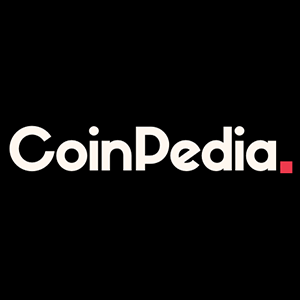Summary Marathon’s mining efficiency in terms of its revenues per exahash is better than its main competitors, Riot and CleanSpark. Record low hashprices could decrease mining difficulty by 5%, which could help Marathon increase its Bitcoin production. Marathon’s new venture in mining Kaspa could generate more than $87 million in revenues at high margins up to 95%. Marathon’s and Bitcoin’s price movement could signal a strong rally in the near term. I’m reiterating my buy rating for Marathon. The month of June hasn’t been kind to Bitcoin ( BTC-USD ) as the world’s largest cryptocurrency is down nearly 16% since the beginning of June, dropping below the $59 thousand mark in the process. Despite that, the largest public Bitcoin miner Marathon Digital Holdings, Inc. ( MARA ) has remained steady over the same period with its stock up 2% since the beginning of June. Earlier this week, Marathon, as well as its competitors Riot ( RIOT ) and CleanSpark ( CLSK ), released their June Bitcoin production updates. All of those companies have seen their production decline YoY due to the halving event that occurred last April. However, Marathon’s update had some promising updates as it mined the most Bitcoin among its peers, increased its industry leading HODL stash, and had the best mining efficiency in terms of its revenues per exahash. In my previous coverages on Marathon titled “ Marathon Digital: The Bitcoin Miner To Own Before Halving And Elections ” and “ Marathon Digital: A Potential Key Cog In Post Halving Bitcoin Mining ”, I was bullish on the stock due to its high exposure to Bitcoin price in light of its HODL stash and its efforts to diversify its business model by selling its technology to other Bitcoin miners. My bullish thesis remains in place as Marathon continued its diversification efforts by venturing into mining Kaspa ( KAS-USD ). I believe this new venture could have substantial benefits to Marathon’s future financial performance due to the high margins associated with mining Kaspa. Meanwhile, the current divergence in the price action of both Marathon and Bitcoin could signal a significant run in the near term. Such a run in both Bitcoin and Marathon could be fueled by the upcoming presidential elections, as I shared in my first coverage on Marathon, as well as a potential decline in mining difficulty due to hashprices being at an all-time low. As such, I’m reiterating my buy rating for Marathon. Improving Mining Efficiency Last June, Marathon mined 590 Bitcoin at a production rate of 19.7 BTC/day. In comparison, Riot mined 255 Bitcoin at a rate of 8.5 BTC/day and CleanSpark mined 445 Bitcoin at a rate of 14.8 BTC/day. On a YoY basis, Marathon’s production declined 40%, Riot’s production declined 45%, while CleanSpark’s production only declined by 9%. Company Mined BTC June 2024 Mined BTC June 2023 Change MARA 590 979 -40% RIOT 255 460 -45% CLSK 445 491 -9% At first glance, the halving event’s impact on CleanSpark appears to be minimal compared to Marathon and Riot. However, the minimal 9% decline in CleanSpark’s production is mainly attributed to its hashrate’s exponential growth from June 2023. Compared to June 2023 levels, Marathon’s operational hashrate increased 102% from 13 EH/s to 26.3 EH/s, Riot’s operational hashrate increased 90% from 6 EH/s to 11.4 EH/s, while CleanSpark’s operational hashrate increased a whooping 204% from 6.7 EH/s to 20.4 EH/s. Company Operational Hash Rate June 2024 Operational Hash Rate June 2023 Change MARA 26.3 13.0 102% RIOT 11.4 6.0 90% CLSK 20.4 6.7 204% At the end of June, Marathon held 18,536 Bitcoin, Riot held 9,334 Bitcoin, and CleanSpark held 6,591 Bitcoin. At the same time, Marathon had a cash balance of $268 million at the end of June, while Riot and CleanSpark had cash balances of $323 million and $688.5 million , respectively, as of March 31st. Accordingly, each company’s cash balance in addition to their respective Bitcoin stashes have the following values at 1 BTC = $58,889.71. MARA RIOT CLSK BTC Held 18,536 9,334 6,591 BTC Value $1,091,579,665 $549,676,553 $388,142,079 Cash $268,000,000 $323,052,000 $688,497,000 BTC+Cash $1,359,579,665 $872,728,553 $1,076,639,079 What caught my attention in Marathon’s monthly update was its mining efficiency in terms of its revenue/EH rate. In June, Bitcoin had an average price of $65,899, a slight increase from $65,266 in May. Accordingly, Marathon’s revenues in June could be around $38.9 million compared to Riot’s $16.8 million and CleanSpark’s $29.3 million. In this way, Marathon, Riot, and CleanSpark, generated $1.48 million, 1.47 million, and $1.44 million respectively per each operational hashrate as the following table shows. MARA RIOT CLSK Revenue $38,880,685 $16,804,364 $29,325,263 Operational Hash Rate 26.3 11.4 20.4 Rev/EH $1,478,353 $1,474,067 $1,437,513 In my opinion, Marathon’s better mining efficiency compared to its peers is especially promising due to the record low hashprice of $0.04 per TH/s that has led Bitcoin’s average hashrate to decline over the past few weeks. As a result, small, unprofitable miners have unplugged from the Bitcoin network, paving the way for large, efficient miners to grow their production with less competition in the network. Based on this, it is expected that mining difficulty could decrease by 5% this week, which could boost hashprice in the coming weeks. Hashrate Index Diversification Efforts On June 26th, Marathon announced a new venture to further diversify its business model after making its technology available for other Bitcoin miners. The company announced that it is mining Kaspa, the fifth largest proof-of-work digital asset with a market cap of $4.14 billion, as of July 4th. Marathon has already purchased 60 petahashes of miners to mine Kaspa, and these miners can generate margins of up to 95% based on Kaspa’s network difficulty rate and price. Currently, the company has 30 petahashes deployed and plans to deploy the remaining petahashes in Q3 2024. As of June 25th, Marathon had mined 93 million Kaspa valued at $15 million, implying an average price of $0.1613. In my opinion, this new venture will boost Marathon’s topline as well as its bottom line due to the high margins of mining Kaspa. According to Minerstat , Marathon could mine around 1,441,635 Kaspa per day once all 60 petahashes are deployed, compared to 720,834 at the current 30 petahashes. Given that Marathon anticipates the full deployment of all 60 petahashes in Q3, I expect it to mine around 99,473,587 Kaspa during the quarter. My forecast is based on 92 days in Q3 and a 30 PH/s run rate for half of the quarter and 60 PH/s for the other half of the quarter. Q3 Production Half at 30 PH 33,158,368 Half at 60 PH 66,315,220 Total Q3 Prod 99,473,587 At Kaspa’s current price of $0.1661, Marathon could generate revenues of $16.5 million in Q3 from mining Kaspa. Meanwhile, the company could generate $22 million in Q4 from mining 132,630,439 Kaspa at 92 days in the quarter and Kaspa’s current price. Assuming that Q1 generally has 90 days, Q2 has 91 days, and Q3 and Q4 have 92 days, Marathon’s 60 PH/s run rate could see it mine 526,196,852 Kaspa next year at the current mining difficulty. KAS Production/Day 1,441,635 KAS Q1 Production 129,747,169 KAS Q2 Production 131,188,804 KAS Q3 Production 132,630,439 KAS Q4 Production 132,630,439 KAS Prod/Year 526,196,852 Therefore, at Kaspa’s current price, Marathon could generate $87.4 million in revenues from this endeavor alone. KAS Rev/Day $239,428 Kas Q1 Rev $11,677,245,201 Kas Q2 Rev $11,938,181,174 Kas Q3 Rev $12,202,000,417 Kas Q4 Rev $12,202,000,417 KAS Annual Rev $87,391,299 It should be noted that these figures differ from actual results depending on Kaspa’s price movement. Bitcoin Price Movement In addition to the fundamentals, looking at Marathon’s and Bitcoin’s respective charts, it appears that both the stock and Bitcoin could witness a strong upward movement in the coming weeks. First thing to look at in both charts is that whenever Bitcoin formed lower highs and lower lows, while Marathon maintained its trend, a strong rally in both Bitcoin and Marathon’s stock occurred as shown in the following charts. TrendSpider Note that Bitcoin is currently forming lower highs and lower lows on the daily timeframe, while Marathon is maintaining its neutral trend. TrendSpider The same can be seen in 2021 when Bitcoin was moving in a downward trend while Marathon maintained its trend. In the following weeks, both Bitcoin and Marathon’s stock climbed 113% and 230%, respectively, from their levels when Bitcoin broke its downward trend. TrendSpider The same happened again in mid-2023 when Bitcoin formed lower highs and lower lows, while Marathon maintained its sideway channel. In the following weeks, Bitcoin and Marathon’s stock climbed 21% and 90% respectively from their levels when Bitcoin broke its downward trend. TrendSpider A potential Bitcoin rally could be supported by the TrendSpider chart above showing the correlation between Bitcoin’s price action and the crypto fear and greed index. The green circles on the chart above highlight that whenever the fear and greed index tests the neutral zone, Bitcoin rallies, which is the case at the moment. TrendSpider Meanwhile, the chart above shows that Marathon has successfully broken out of a symmetrical triangle pattern with a retest of the trendline. This could be a sign of a strong upward movement in the near term. Risks The main risk to my thesis is Bitcoin’s price action. While the technicals and the expectations of lower mining difficulty due to the record low hashprices might signal an upward movement in the cryptocurrency’s price in the coming weeks, Bitcoin could continue its downward trend, especially if June’s non-farm payroll data, scheduled for July 5th , are negative as this could decrease the chances of the Fed cutting interest rates this year. Moreover, Marathon’s venture into mining Kaspa may not provide the forecasted results if the cryptocurrency performs poorly. Conclusion In summary, I remain bullish on Marathon following its June Bitcoin production update that highlighted its efficiency in terms of its revenues/EH, which was better than its largest competitors Riot and CleanSpark. This could be a promising sign for Marathon’s future financial performance thanks to the expectations of mining difficulty declining by 5% in light of the record low hashprices that has driven out inefficient miners. Marathon’s new venture into mining Kaspa to diversify its digital assets could also lead to high returns thanks as it could generate around $87.4 million in annual revenues at extremely high margins of up to 95%. Meanwhile, the divergence between Marathon and Bitcoin’s price movements could signal a strong rally for both Bitcoin and Marathon’s stock, considering the historical data. Such a potential run is further supported by Bitcoin’s price action relative to the fear and greed index, as well as Marathon breaking out of its symmetrical triangle chart pattern. In light of these factors, I’m reiterating my buy rating for Marathon.













